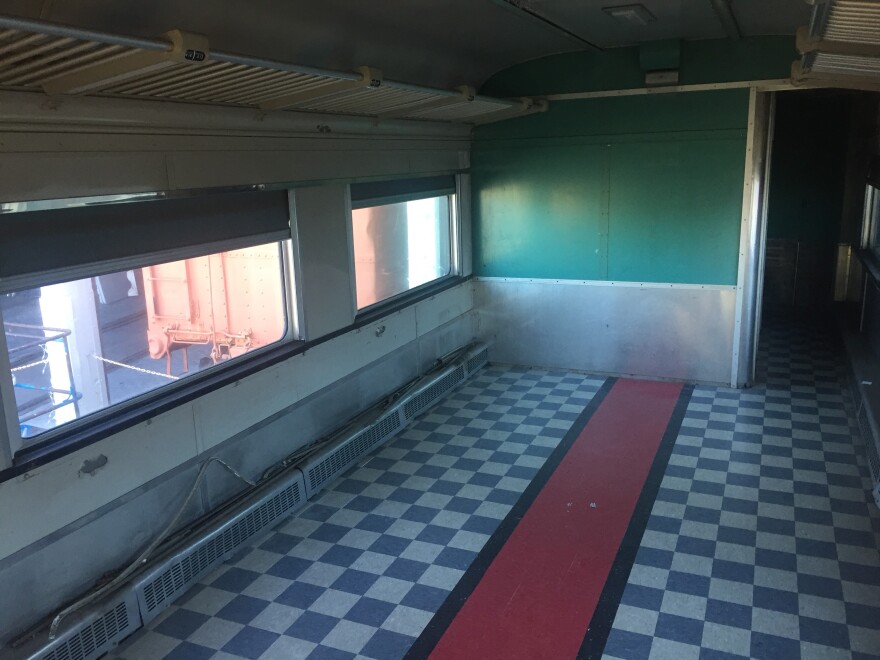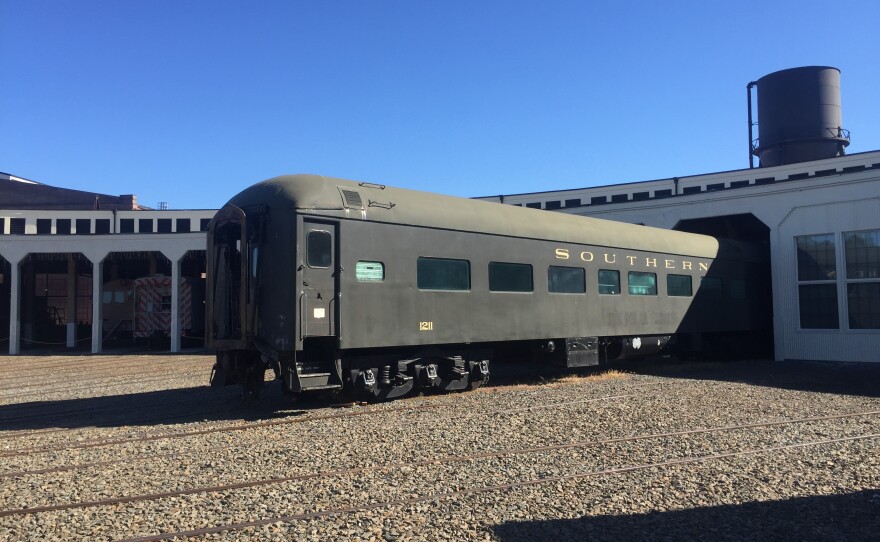There are a lot of train cars on display at the North Carolina Transportation Museum in Rowan County. But there’s one getting a lot attention these days. Museum train historian Tyler Trahan says it has an important story to tell.

“What we’re looking at is a 1940s-era segregated passenger car," Trahan said on a recent walkthrough of the car. "This was back in the day of separate but equal accommodations on railroads and buses."
The museum is renovating this car with the help of nearly $300,000 federal grant.
Inside, it’s a hollow shell of rust and peeling teal paint. The car’s 44 seats are gone, leaving the worn checkerboard floor empty. But not for long.
"They'll be able to walk through it and see some of the original seating," Trahan said. "And then there'll be interpretive displays that tell you what you're looking at and tell you about the history of the car and about segregation in North Carolina.
"The story is not just about this car. We're using this car as a vessel to tell all of the different stories about segregated passenger trains in North Carolina and the Southeast."
The car has two separate passenger compartments — one for black passengers and one for whites. There’s a bathroom in the middle that would have been used by black men. It’s what separated the two passenger compartments. In the wall on either side of the bathroom was a water cooler — one for blacks, one for whites.
"Every railroad that served a state that had segregation laws had to provide separate but equal accommodation for black and white passengers," Trahan said. "Not all of them did it with these partitioned passenger cars that sat both black white passengers in the same car in separate rooms. Some railroads would run two separate cars, one for black passengers, one for white passengers.

"If this car were to be used on a train that went to a state that did not have segregation laws — let's say it crossed the river and crossed the border. When it crossed the border, the conductor would go through and change the signs over each compartment to take away the racial designations. And on the way back, they do the opposite — they'd put up those signs."
There were consequences if a black passenger crossed into the white section.
"Once the conductor finds out, the conductor would have to ask them to move back to the black section," Trahan said. "If they refused, they would stop the train, call the police and have that passenger removed. That's actually how 'separate but equal' came about. It was on a railroad."
It involves a name that may be familiar.
"It was Homer Plessy, and he intentionally got onboard a passenger train, sat in the white section," Trahan said. "He was multiracial. He was passing for white. But he told the conductor, 'I am black, please stop the train and arrest me so I can go to court.'"
It eventually turned into the in the landmark 1896 U.S. Supreme Court case Plessy v. Ferguson, in which the court ruled "separate but equal" to be constitutional. The court reversed itself and struck down that doctrine half a century later in Brown v. Board of Education.

But it wasn’t until 1961 at the order of then-Attorney General Robert Kennedy that the Interstate Commerce Commission banned racial segregation on trains. By then ridership had declined sharply.
"That decline started in the 1930s and continued all the way up until 1971 when Amtrak took over," Trahan said. "Amtrak was essentially a bailout program for the private railroads, which were losing a lot of money running their legally required passenger trains.
"So, Amtrak took over those trains from them — took over that financial obligation — and some of the cars went to Amtrak. The rest the railroads had no use for without running passenger trains, so a lot of them were scrapped."
Soon, the renovations will be complete. Trahan hopes visitors who come aboard walk away with a better understanding of the impact of segregation.
"I'd hope that they'd gain an appreciation for the everyday reality of segregation," he said. "This is sort of about telling the everyday story of people riding on the train. One of the things that makes museums great is you're not just reading about something in a book. You can actually go and see the physical object and sit in the seats that these people rode in, and you can experience it for yourself. It's a more immersive way to understand history.




